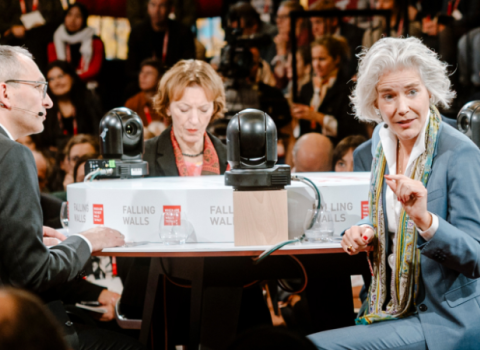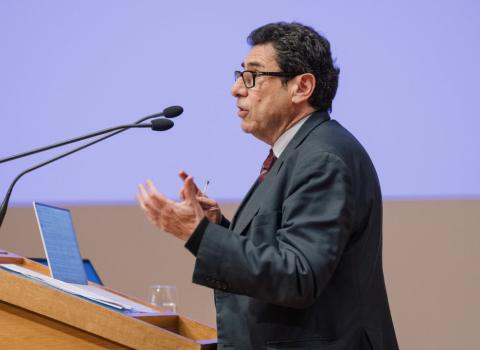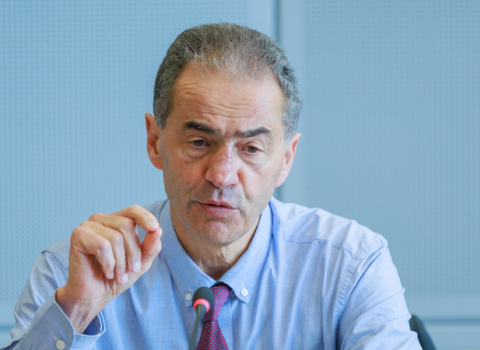Brussels think tanks warn that proposed reforms to the European Research Council could undermine scientific excellence

Photo credits: Paolo Margari / Unsplash
The European Commission’s push to exert more control over the European Research Council (ERC) risks undermining one of the EU’s most successful scientific institutions, policy experts warn.
Founded in 2007, the ERC was created to support ground-breaking, high-risk, high-gain research through an investigator-driven, bottom-up approach.
In mid-July, the Commission unveiled its proposal for the next research Framework Programme, set to begin in 2028. Among its provisions are changes to the ERC’s governance structure, including the introduction of a shorter term for its president, a move that experts argue would lead to more top-down control.
“It’s really difficult to understand why the ERC, which is a success, should need a shorter mandate for its president” said Daniel Gros, director of the Institute for European Policymaking at Bocconi University, in an interview with Science|Business. “That’s the dangerous part of the proposal. [. . .] This is long-term research, and there's absolutely no reason to shorten the mandate. If the idea is to make [the ERC] more responsive to competitiveness issues, that's the worst approach.”
Reinhilde Veugelers, a professor at KU Leuven and a senior fellow at the Bruegel economics think tank, said that the independence of the ERC and its scientific council is “crucial” to ensure that bottom-up research can effectively contribute to the broader EU research system.
Andrea Renda, director of research at the Centre for European Policy Studies, echoed this sentiment, saying that the “ERC should continue to nurture curiosity-driven research.”
Although the Commission is proposing to double the ERC’s budget under the next Framework Programme, Gros questioned the benefit. “Increasing [the ERC budget] while making it less efficient. . . who really gains from that?”
Efficient spending
While the proposed €175 billion budget for the successor to Horizon Europe has been met with cautious optimism by stakeholders, leading policy experts are less concerned with the figure itself. Instead, they say that what truly matters is how the money is spent.
“There is no ideal figure,” Renda told Science|Business. “€175 billion can be sufficient if well spent and with the right governance arrangements.”
Veugelers agreed, emphasising “effectiveness” in funding over volume and adding that past ambitions have not been met despite increased funding. What is needed is an alignment between resources and clearly defined outcomes and measurable key performance indicators, metrics used to evaluate the success and impact of specific goals within a programme.
Gros echoed that view and warned against the EU’s tendency to present impressive figures without ensuring impact. “The EU often throws around big numbers,” he said. But the “size of the budget matters less than its composition.”
United on governance
One point of consensus among the experts was concern over the Commission’s proposal for joint management of Pillar 2, the part of the research Framework Programme focused on collaborative research addressing global challenges and industrial competitiveness. This is to be overseen by the Commission directorates for research (DG RTD) and industrial policy (DG Grow), reflecting the close connection with the European Competitiveness Fund.
While in reasonable in principle, said Renda, “the RTD/Grow joint management has not proven very effective and simple in the past.”
Gros was more explicit, saying the structure would not be useful, leading to more confusion. “DG Grow will be looking more at short-term issues and Pillar 2 is just about [long-term] research. These are research programmes for the next three or four years.” Gros speculated that the proposed structure might serve political purposes more than practical ones: “It's just a way for the president's cabinet to gain more influence.”
Divergence on the EIC
When asked about increased top-down control over the European Innovation Council (EIC) after 2027, experts offered different insights.
While Renda argued that the EIC “should become more mission-oriented and ARPA-like,” referring to the US Advanced Research Projects Agencies model, Veugelers disagreed, insisting the EIC should have bottom-up approach more akin to the ERC.
“The EIC should be a bottom-up instrument and should not evolve into an ARPA-like body,” she said.
Related articles
- Has the European Commission listened to its advisors on FP10?
- Dual use undermines promised Horizon budget increase, says MEP Repasi
Veugelers acknowledged that Europe does need ARPA-type programmes, but said they should be separate from the EIC. These initiatives require a distinct governance structure, different expert evaluation processes and specialised policy officers, she said.
She also noted that such programmes must be closely linked to public procurement in sectors such as defence, space and clean technologies, where large-scale investments can be more effectively leveraged. “That’s something the EIC is not designed to do,” Veugelers said.
Dual-Use and the EIT
On the Commission’s confirmation that dual-use projects will be supported in the next Horizon Europe programme, both Gros and Renda cautioned against making this the default across all programme areas.
Gros said that including dual-use research could help reduce the stigma around defence-related innovation. However, he warned against overextending the concept, as the Framework Programme shouldn’t be defined by dual-use. Instead, it should permit dual-use projects by default, without assuming all research must have military relevance. In his view, the dual use label “it's completely useless.”
Renda proposed a more targeted approach, suggesting that only certain parts of the programme should be dual-use by default, including the upper tier of Pillar 2, focused on industrial competitiveness, along with related activities under the EIC and the European Investment Bank. In contrast, foundational research in Pillar 1, the global societal challenges portion of Pillar 2, and Pillar 4, which covers widening participation, should remain civilian in focus.
Veugelers supported the idea of incorporating dual-use elements into Horizon Europe, but expressed scepticism about its implementation, citing weak governance structures and a fragmented innovation ecosystem as key barriers.
On the future of the European Institute of Innovation and Technology (EIT), Gros and Renda agree on the discontinuation of public funding for the EIT and a self-sustaining future for its knowledge and innovation communities.
According to Veugelers, the EIT has not been the “most successful EU programme,” but the underlying concept of integrating education, research and innovation remains valuable. Rather than maintaining the EIT as a standalone entity, she suggested incorporating its approach into Pillar 2, where it could better support network-building and collaboration across sectors.





 A unique international forum for public research organisations and companies to connect their external engagement with strategic interests around their R&D system.
A unique international forum for public research organisations and companies to connect their external engagement with strategic interests around their R&D system.